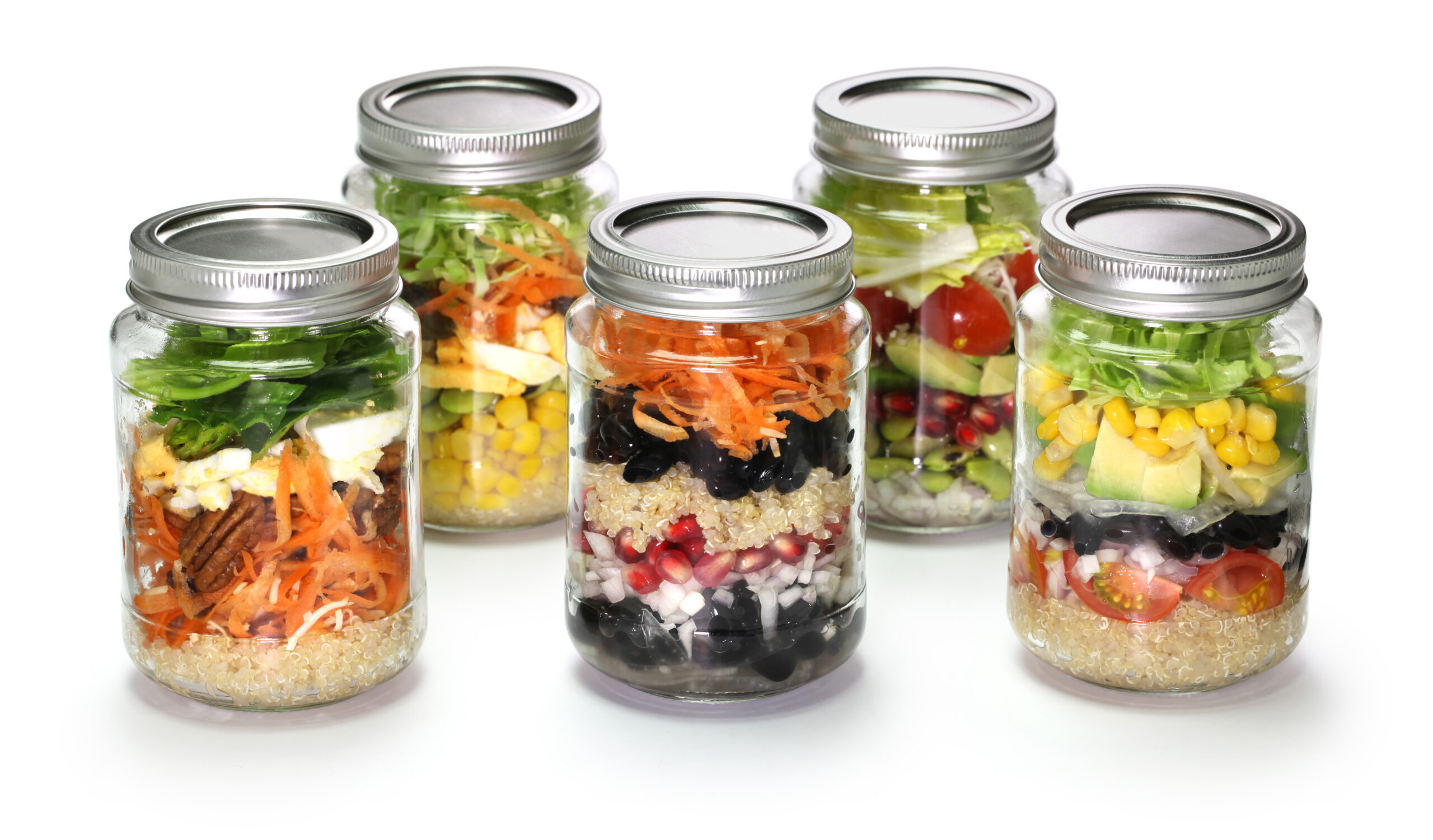Looking to create healthy meals without breaking the bank this year? Look no further. In this post, we will explore various ways to eat nutritious meals on a budget.
Discover tips and tricks on how to stretch your dollar while still enjoying wholesome culinary creations.
From the cheapest and healthiest ingredients to simple cooking techniques, we’ve got you covered.
So, don’t let a tight budget stop you from nourishing your body. Join us as we unravel the secrets of healthy
How do you eat healthy on a shoestring budget?
Plan your meals ahead
One of the best ways to eat healthy on a shoestring budget is to plan your meals ahead of time. This allows you to make a detailed shopping list and avoid any impulse purchases.
By deciding in advance what meals you will be cooking for the week, you can ensure that you have all the necessary ingredients and avoid the need to make last-minute trips to the store, where you might be tempted to buy unhealthy and more expensive options.
Cooking tips from Famous Chefs
Buy in bulk
Another tip for eating healthy on a budget is to buy in bulk whenever possible.
Buying items like rice, beans, oats, and whole grains in larger quantities can significantly reduce the cost per serving.
Additionally, buying bulk items reduces the amount of packaging waste, which is not only environmentally friendly but can further reduce costs.
Look for bulk bins at your local grocery store or consider joining a wholesale club to take advantage of bulk discounts.
Cook at home
Cooking at home is not only healthier but also more cost-effective than eating out or buying pre-packaged meals.
By preparing your own meals, you have control over the ingredients and portion sizes, allowing you to make healthier choices. Investing in basic cooking skills and learning to cook simple and nutritious recipes can save you a lot of money in the long run.
Plus, cooking at home can be a fun and creative way to explore new flavors and cuisines.
Focus on plant-based proteins
Proteins can often be one of the more expensive components of a meal, especially if you opt for meat or seafood.
However, plant-based proteins such as beans, lentils, tofu, and tempeh are much more budget-friendly options.
Not only are they cheaper, but they also provide essential nutrients and are generally lower in fat and cholesterol.
Experiment with incorporating more plant-based proteins into your meals to save money without sacrificing flavor or nutrition.
Shop seasonally and locally
Shopping for fruits and vegetables that are in season is a great way to save money and ensure freshness. Seasonal produce tends to be more abundant and therefore cheaper.
Farmers’ markets are also excellent places to find affordable, locally-grown produce.
Not only does this support local farmers, but it also allows you to access fresh and nutritious fruits and vegetables without breaking the bank.
Additionally, farmers’ markets often offer a wide variety of unique and heirloom produce that you may not find at your regular grocery store.
Cooking tips from Famous Chefs
Can you still eat healthy food if you are on a budget?
Yes, it is possible
Eating healthy food on a budget is absolutely possible with proper planning and smart choices.
While it may require a little extra effort and creativity, it is well worth it for the numerous benefits to your health and your wallet.
With a bit of knowledge and mindful decision-making, you can nourish your body with nutritious meals that won’t break the bank.
Make smart choices
When it comes to eating healthy on a budget, making smart food choices is key. This means prioritizing nutrient-dense foods over empty calories and focusing on quality rather than quantity.
Think about which foods provide the most bang for your buck in terms of nutrition, such as whole grains, fruits, and vegetables.
Take advantage of sales and discounts to stock up on healthy staples, and when buying packaged foods, compare prices and read ingredient labels to ensure you’re getting the most nutritional value for your money.
Prioritize whole foods
Whole foods, such as fresh fruits and vegetables, whole grains, lean proteins, and healthy fats, are not only nutritious but also generally more affordable compared to processed and packaged foods.
These unprocessed foods retain their natural nutrients and often have a lower price per calorie.
By focusing on whole foods and minimizing your intake of processed snacks and pre-packaged meals, you can stretch your budget while improving your overall health.
Buy from discount stores
Discount stores, such as discount grocery stores or ethnic markets, can be a treasure trove of affordable and healthy food options.
These stores often offer lower prices compared to traditional supermarkets while still providing a wide variety of fresh produce, pantry staples, and other essential ingredients.
Don’t be afraid to explore different grocery stores in your area to find the best deals and discover new healthy ingredients that you might not have considered.
Grow your own produce
If you have the space and time, growing your own produce can be an incredibly cost-effective and rewarding way to eat healthy on a budget.
Even if you only have a small balcony or a windowsill, you can still grow herbs or small vegetables like cherry tomatoes or lettuce.
Not only does this save money on groceries, but it also allows you to enjoy the satisfaction of nurturing your own plants and eating the fruits of your labor.

This image is property of images.pexels.com.
What is the cheapest and healthiest way to eat?
Emphasize whole grains
Whole grains, such as brown rice, quinoa, oats, and whole wheat bread, are not only affordable but also incredibly nutritious.
These grains are rich in fiber, vitamins, and minerals, and they provide a sustained source of energy. Incorporating whole grains into your meals can help keep you full, maintain stable blood sugar levels, and promote digestive health.
Cooking tips from Famous Chefs
Incorporate legumes and beans
Legumes and beans, such as black beans, chickpeas, lentils, and split peas, are highly economical sources of protein, fiber, and other essential nutrients.
They are versatile ingredients that can be used in a variety of dishes, including soups, stews, salads, and spreads. Adding legumes and beans to your meals not only boosts their nutritional value but also helps to reduce overall food costs.
Include plenty of fruits and vegetables
Fruits and vegetables are essential components of a healthy diet and can be surprisingly affordable, especially when purchased in season or from local sources.
Aim to include a wide variety of fruits and vegetables in your meals to provide essential vitamins, minerals, and antioxidants.
Frozen fruits and vegetables can also be a cost-effective alternative when fresh options are not readily available.
Opt for lean protein sources
Protein is an important nutrient for building and repairing tissues, but it can also be expensive, especially when choosing meat or seafood.
Opting for more affordable sources of lean protein, such as skinless chicken, turkey, eggs, and low-fat dairy products, can help keep costs down while still meeting your nutritional needs.
Additionally, plant-based protein sources like tofu, tempeh, and seitan are often more budget-friendly than animal proteins.
Minimize processed foods
Processed foods, such as convenience meals, sugary snacks, and sugary beverages, tend to be more expensive compared to whole foods.
They often provide less nutritional value and can contribute to poor health outcomes. Minimizing your consumption of processed foods not only saves you money but also helps you maintain a well-balanced and healthy diet.
Focus on cooking from scratch and using fresh, whole ingredients as much as possible.
How much longer will you live if you eat healthy?
Improves overall lifespan
Eating healthy has been linked to a longer overall lifespan. By nourishing your body with a balanced diet rich in nutrients, you reduce the risk of chronic diseases and maintain optimal organ function.
Consuming a variety of whole foods and minimizing the intake of processed and unhealthy foods can support longevity and enhance your overall quality of life.
Reduces the risk of chronic diseases
A healthy diet can significantly reduce the risk of chronic diseases such as heart disease, diabetes, and certain types of cancer.
By choosing to eat nutrient-dense foods such as fruits, vegetables, whole grains, and lean proteins, you support the health of your cardiovascular system, regulate blood sugar levels, and protect against cellular damage.
These factors combined contribute to a decreased risk of developing chronic diseases, which can ultimately lead to a longer and healthier life.
Enhances quality of life
Eating a healthy diet can have a profound impact on your quality of life. When you fuel your body with nutritious foods,
And, you are more likely to have the energy and stamina to engage in physical activity, maintain a healthy weight, and support optimal mental and emotional well-being.
These factors contribute to an overall improved quality of life, allowing you to fully enjoy and participate in daily activities and pursuits.
Boosts immune system
A well-nourished body is better equipped to fight off infections and diseases.
Eating a healthy diet that includes a variety of fruits, vegetables, and other immune-boosting foods can provide the vitamins, minerals, and antioxidants necessary to support a strong immune system.
By fortifying your immune system, you can reduce the frequency and severity of illnesses and potentially extend your lifespan.
Increases energy levels
Eating a healthy diet provides your body with the nutrients it needs to produce energy. By consuming a balanced mix of carbohydrates, proteins, and healthy fats, you provide your body with a sustained source of energy that fuels physical and mental activities.
When you have higher energy levels, you are more likely to engage in regular exercise, maintain a healthy weight, and enjoy an active lifestyle, all of which contribute to a longer and healthier life.

This image is the property of images.pexels.com.
What is the cheapest, healthiest food to make?
Vegetable stir-fry with brown rice
A vegetable stir-fry with brown rice is not only a budget-friendly recipe but also a nutritious and delicious option. Stir-frying vegetables retain their natural flavors and textures, while brown rice provides complex carbohydrates and fiber.
You can customize this dish with various vegetables, such as broccoli, bell peppers, carrots, and snap peas, making it a versatile, easy-to-make, and affordable meal.
Bean and vegetable soup
Bean and vegetable soup is a hearty and nutritious option that can be made with minimal ingredients and a tight budget. Combining beans with a variety of vegetables, such as celery, onions, carrots, and tomatoes, provides a good balance of protein, fiber, and vitamins.
This soup can be easily customized by using different types of beans and vegetables, and it’s a great way to use up leftover ingredients.
Whole wheat pasta with marinara sauce
Whole wheat pasta is a budget-friendly alternative to regular pasta, and when paired with a homemade marinara sauce, it becomes a nutritious and affordable meal.
Whole wheat pasta is higher in fiber and nutrients compared to refined pasta, and a simple marinara sauce can be made using canned tomatoes, garlic, onions, and herbs.
This dish can be enhanced by adding sautéed vegetables or lean proteins such as grilled chicken or shrimp.
Oatmeal topped with fruits
Oatmeal is a cheap and nutritious breakfast option that can be customized with various toppings. Combine oats with water or milk, and cook them on the stovetop or in the microwave.
Top your cooked oatmeal with sliced fruits, such as bananas, berries, or apples, and sprinkle with nuts or seeds for added protein and healthy fats.
This meal not only provides sustained energy but also keeps you full and satisfied throughout the morning.
Roasted vegetables with quinoa
Roasted vegetables with quinoa is a simple yet flavorful dish that is packed with nutrients.
Toss your favorite vegetables, such as Brussels sprouts, sweet potatoes, and bell peppers, with olive oil, salt, and pepper, and roast them in the oven until tender and caramelized.
Serve the roasted vegetables over cooked quinoa for a complete meal that offers a good balance of carbohydrates, fiber, protein, and vitamins.
How do I cook healthy on a tight budget?
Meal plan
Meal planning is essential for cooking healthy on a tight budget. Take some time each week to plan out your meals and create a shopping list based on those meals.
By planning ahead, you can avoid unnecessary purchases and ensure that you’re using all the ingredients you buy.
This reduces food waste and helps you stick to a budget while still enjoying delicious and nutritious meals.
Stick to a shopping list
When you go grocery shopping, stick to your planned shopping list to avoid impulse purchases. It’s easy to get swayed by marketing and attractive displays of products, but by focusing on the items you need, you can save money and reduce the temptation to buy less healthy and more expensive options.
Before you go to the store, take inventory of what you already have at home to avoid buying duplicates or unnecessary items.
Use cheaper protein alternatives
Protein can be a significant expense in your grocery budget, but there are many budget-friendly protein alternatives available. Consider incorporating more plant-based proteins, like beans, lentils, tofu, and eggs, into your meals.
These options not only provide essential nutrients but are also typically cheaper than meat and seafood.
It’s also worth checking for sales or discounts on lean cuts of meat or frozen seafood to save money while still enjoying protein-rich meals.
Reuse leftovers
Don’t let leftovers go to waste! Instead, get creative and find ways to repurpose them into new meals. Leftover roasted vegetables can be added to a salad, stir-fried with some protein and sauce, or used as a topping for a homemade pizza.
Cooked grains like quinoa or brown rice can be used as a base for a grain bowl or added to soups and stews. Transforming leftovers into new and exciting dishes helps stretch your budget and minimizes food waste.
Limit eating out
Eating out can quickly consume a significant portion of your budget. While an occasional meal out can be a treat, try to limit eating out to special occasions and focus on cooking at home as much as possible.
By cooking your own meals, you have control over the ingredients, portion sizes, and cooking methods, ensuring that you’re making healthier choices and saving money.

This image is the property of images.pexels.com.
How do you eat healthily when you’re broke?
Consider food assistance programs
If you’re facing financial difficulties and struggling to afford healthy food, consider exploring food assistance programs in your area. These programs, such as food banks, community pantries, or government-funded initiatives, provide essential food items to those in need.
While they may not always offer a wide variety of fresh produce, they can provide a helping hand in times of financial struggle, allowing you to access basic nutrition until your situation improves.
Choose affordable staples
When you’re on a tight budget, it’s essential to prioritize affordable staples that provide the most nutritional value for your money. Rice, pasta, oats, canned beans, and frozen vegetables are all budget-friendly options that can form the basis of many healthy meals.
These staples are versatile and can be combined with inexpensive proteins, such as eggs, tofu, or canned tuna, to create satisfying and nutritious meals.
Buy frozen fruits and vegetables
Fresh produce can be expensive, especially when it’s out of season. Fortunately, frozen fruits and vegetables are a cost-effective alternative that can still provide essential nutrients.
Frozen produce is often picked at its peak ripeness and flash-frozen, preserving its nutritional value. It can be used in smoothies, stir-fries, soups, and other dishes, making it an excellent option for eating healthily on a budget.
Use budget-friendly recipes
There are many resources available that provide budget-friendly recipes and meal ideas. Websites, cookbooks, and even social media platforms often offer recipes specifically tailored to those on a tight budget.
These recipes focus on using affordable ingredients, minimizing waste, and maximizing flavor.
Experimenting with budget-friendly recipes allows you to enjoy a variety of meals without compromising your health or your wallet.
Avoid food waste
Minimizing food waste is crucial when you’re on a tight budget. Plan your meals and portion sizes carefully to avoid preparing more food than you need.
Use leftovers creatively and freeze any excess portions for future meals.
Additionally, learn how to properly store and preserve fresh produce to extend its shelf life. By reducing food waste, you can save money and ensure that you’re making the most of your available resources.
Eat Healthy on a Budget: Tips and Tricks
Shop local farmer’s markets
Local farmer’s markets are excellent places to find fresh and affordable produce.
Not only do you support local farmers and their livelihoods, but you also have access to a variety of in-season fruits and vegetables that are often more affordable compared to supermarkets.
Embrace the seasonal offerings and experiment with new ingredients to diversify your meals while staying within your budget.
Utilize coupons and sales
Keep an eye out for coupons, discounts, and sales on healthy food items. Many grocery stores offer weekly specials on staples like grains, canned goods, and fresh produce.
By planning your meals around what’s on sale, you can save money without compromising on nutrition. Additionally, consider joining loyalty programs or signing up for newsletters from your favorite grocery stores to receive exclusive discounts and offers.
Invest in kitchen essentials
Investing in a few kitchen essentials can go a long way in helping you eat healthy on a budget. Basic tools like a sharp knife, a cutting board, and quality cookware can make cooking at home more efficient and enjoyable.
Additionally, having pantry staples like herbs, spices, olive oil, and vinegar on hand allows you to easily add flavor to your meals without relying on expensive condiments or pre-packaged sauces.
Prepare meals in bulk
Preparing meals in bulk is a great way to save time, money, and effort. Cook large batches of soups, stews, casseroles, or curries and portion them out for future meals.
Freeze individual servings for easy grab-and-go lunches or dinners on busy days. This not only reduces the amount of cooking you have to do but also prevents food waste and ensures you always have a healthy meal available.
Experiment with different spices and herbs
Spices and herbs are a cost-effective way to add flavor to your meals without adding extra calories or breaking the bank.
By experimenting with different combinations, you can transform simple and affordable ingredients into flavorful and exciting dishes.
Stock your pantry with a variety of spices and herbs, and use them liberally to create delicious and healthy meals that won’t leave you bored or unsatisfied.

Budget-Friendly Meal Prep Ideas
Prepare overnight oats for breakfast
Overnight oats are a convenient and budget-friendly breakfast option that can be prepared in advance.
Simply combine oats, milk, or yogurt, and your choice of sweetener and flavorings in a jar or container. Let it sit in the refrigerator overnight, and in the morning, you’ll have a delicious and nutritious breakfast ready to eat.
Customize your overnight oats by adding fresh or frozen fruits, nuts, or seeds for added texture and flavor.
Make a batch of homemade granola bars
Homemade granola bars are a great way to curb your midday cravings while also sticking to your budget. They can be made with simple ingredients like oats, nuts, seeds, honey, and nut butter.
 By making your own granola bars, you have control over the ingredients, ensuring they are free from preservatives and unnecessary sugars. Make a big batch and store them in an airtight container for an easy and portable snack throughout the week.
By making your own granola bars, you have control over the ingredients, ensuring they are free from preservatives and unnecessary sugars. Make a big batch and store them in an airtight container for an easy and portable snack throughout the week.
Create mason jar salads for quick lunches
Mason jar salads are a convenient and cost-effective way to enjoy healthy and satisfying lunches. Layer your favorite salad ingredients, such as leafy greens, chopped vegetables, proteins, and dressings, in a wide-mouthed mason jar.
When it’s time to eat, simply shake the jar to mix the ingredients together, and you have a delicious and fresh salad ready to enjoy. Preparing multiple mason jar salads at once allows you to have quick and nutritious lunches on hand for several days.
Cook a large pot of soup or stew
Cooking a large pot of soup or stew is an excellent way to stretch your budget and enjoy hearty and nutritious meals throughout the week. Soups and stews are flexible recipes that can be made with various vegetables, proteins, and grains.
A single batch can provide multiple servings that can be consumed for lunch or dinner over several days. Freeze any excess portions for future meals, ensuring you always have a healthy and filling option available.
Pre-cut fruits and veggies for easy snacking
Pre-cutting fruits and vegetables makes it easier and more convenient to grab a healthy snack when hunger strikes.
Spend some time each week washing, peeling, and chopping your favorite fruits and vegetables, and store them in portioned containers or resealable bags.
This way, when you’re craving a snack, you can quickly reach for pre-cut veggies like carrot sticks, celery, or bell peppers, or enjoy a refreshing serving of sliced fruits like oranges, watermelons, or grapes.
Quick, Easy, and Affordable Recipes
Black bean and corn quesadillas
Black bean and corn quesadillas are a delicious and budget-friendly meal option. Drain and rinse a can of black beans and combine them with canned corn, diced bell peppers, onions, and spices like cumin and chili powder.
Spread the mixture over tortillas, top with shredded cheese, and cook in a skillet until golden and crispy. Serve with salsa, guacamole, or sour cream for a satisfying and protein-packed meal.
Vegetable stir-fry with tofu
A vegetable stir-fry with tofu is a nutritious and inexpensive way to enjoy a variety of colorful vegetables.
Toss your choice of vegetables, such as broccoli, bell peppers, snap peas, and carrots, in a hot skillet with some oil and minced garlic.
Add cubed tofu for a plant-based protein source, and season with soy sauce or your favorite Asian-inspired sauce. Stir-fry until the vegetables are tender-crisp, and serve over cooked rice or noodles.
Sweet potato and black bean chili
Sweet potato and black bean chili is a flavorful and hearty meal that won’t break the bank.
Sauté diced onions, bell peppers, and garlic in a large pot. Add cubed sweet potatoes, canned black beans, diced tomatoes, vegetable broth, and spices like cumin, paprika, and chili powder.
Simmer until the sweet potatoes are tender and the flavors have melded together. Top with fresh cilantro and a dollop of Greek yogurt for a satisfying and budget-friendly dinner option.
Quinoa salad with roasted vegetables
Quinoa salad with roasted vegetables is a versatile and nutritious meal that can be enjoyed warm or cold. Cook the quinoa according to package instructions and let it cool.
Toss a mixture of your favorite vegetables, such as cherry tomatoes, zucchini, eggplant, and red onions, with olive oil, salt, and pepper, and roast them in the oven until tender.
Combine the roasted vegetables with the cooked quinoa and add a simple dressing made with olive oil, lemon juice, and herbs. This salad can be enjoyed as a main dish or as a side dish alongside grilled chicken or fish.
Greek yogurt parfait with fruits and nuts
A Greek yogurt parfait with fruits and nuts is a satisfying and budget-friendly option for breakfast or a healthy snack. Layer
Greek yogurt with your favorite fruits, such as berries, sliced bananas, or diced mango, in a glass or jar. Top with a sprinkle of nuts or granola for added crunch and flavor.
Greek yogurt provides protein and probiotics, while fruits and nuts add vitamins, minerals, and healthy fats, making this parfait a well-rounded and nutritious choice.
Eating healthy on a shoestring budget is absolutely possible with some planning, smart choices, and a little creativity.
By prioritizing whole foods, buying in bulk, cooking at home, focusing on plant-based proteins, shopping seasonally and locally, and implementing other cost-saving strategies, you can enjoy nutritious and delicious meals without breaking the bank.
Remember that eating healthy is an investment in your long-term well-being, and even with a tight budget, you can still make choices that support your overall health and longevity.
Happy Cooking,

